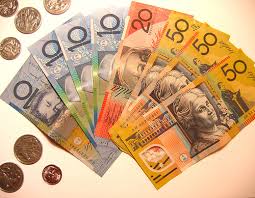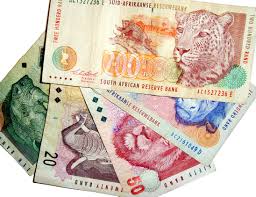By tothetick
Gold has gone down Friday to under $1, 200 an ounce and that means it’s reached its lowest point for the past three years. Worse than that: it’s been the worst quarterly performance for gold for 45 years! But the mere mining of gold is now just under the market value of gold and this could have serious consequences for people working in that sector. Gold is almost at production cost today and if that stays there while the markets readjust, then it will be cause for concern for those working in mining.
The ‘All in Sustainable Cash Cost’ of gold, or the cost per ounce for a company to mine gold, is roughly $919. However that is for the US, where it is the cheapest to produce gold. In Africa, the level at which mining gold becomes profitable may be as high as $1, 300. The cost of gold production is broken down into the following areas:
- $610 represents the direct cost of mining the gold.
- $156 for mine development expenditure
- $121 for sustaining Capital expenditure (to upgrade physical assets such as property).
- $50 goes to gains made under currency hedging.
- $44 administrative costs.
- $44 goes in royalties (investors buy royalties and provide capital to the mine for future production and then they are paid back in royalties).
- $29 for by-product credits.
- $11 for the mine on-site exploration.
- $26 for rehabilitation and accreditation.
- $14 for other expenses.
Gold is most economically produced in North America, then in Europe. Africa is the most costly place to mine gold.
In some places in the world there has been a doubling in the cost of gold production over the past five years and it now stands at a world average of about $1, 000. Obviously, smaller mines are having greater difficulty in keeping up with that or will do in the future if the prices remain where they are. They may have to end up closing down. The only ones that will be able to maintain any sustained production will be the larger companies or the ones that have good cash flows and that might be able to prop themselves up for a while. There is also the added problem of the fact that fixed costs in the industry have seen a rise in recent years. Salaries, in particular have increased.
Gold has fared badly over the last quarter quite simply because of the Federal Reserve’s decision to cut Quantitative Easing by 2014. Analysts suspect, however, that it would be impossible for gold to fall further or to even go under $1, 000 an ounce as this would mean that the vast majority of mines would then turn unprofitable and definitely close. However, impossible always tends to happen right when it’s not being expected. So, will gold fall below that price of $1, 000?
Analysts also believe that the price of gold will automatically stabilize when mines go into liquidation and there are cuts in gold production. Reducing supplies of gold on to the market will lead to a rise in the price and greater stability. But, in the meantime, there will be miners that lose their jobs and mines that close leaving only the big fish to snap them up once the price of gold returns to better times.
The fall in gold prices has certainly been brought about by the end to stimulus that has been announced and which seems to be edging closer in the light of economic data revealed yesterday regarding US incomes and consumer spending, in particular. Even if the progress is tepid to say the least, it reveals that the Federal Reserve will withdraw Quantitative Easing as planned. That means that people will be leaving gold as it will no longer be just a safe haven to place your money while the economy gets back on track.
Consumer-spending data in the USA showed an increase of 0.3% in May (which was the opposite of April’s 0.3%-drop). After inflation, adjustments, spending rose by 0.2%. In the first three-months there was an increase in economic growth of 1.8%, which admittedly is not much. That’s sluggish. Consumer spending may have been helped along the way somewhat by rising prices of real estate in the USA. Given the fact that it was this which was one of the triggering factors of the financial crisis, Ben Bernanke is looking at it as a good gauge of what the state of the economy is like. This has a positive effect on consumer confidence. Average housing prices increased by 12.1% ending in April in comparison with last year. April has seen the largest monthly gain for six years (+2.5%). Housing prices are increasing perhaps some suggest due to the fact that there is a current shortage. The US population has increased by 12 million over the past 6 years, and there has been a cut in the building trade and real-estate sector regarding new homes being built. Rising house prices will mean that the economy is getting back on its feet, some will say. Incomes in the USA also increased by 0.5% and that means it was the best increase since February.
But, the President of the New York Federal Reserve Bank, William Dudley, did state yesterday that if economic growth were under what the Federal Reserve has predicted, then Quantitative Easing will more than likely continue. Just last week, the Federal Reserve predicted a fall in unemployment to even below 6.5%, which would mean that the US was back in the boundaries of healthy. That is for 2014, which still means that it is a year ahead of what was previously predicted. March’s forecast of economic expansion in the US was raised and is now situated at between 3% or 3.5% for this year.
Gold falling in price has brought about a fall in the Australian Dollar also as a knock-on effect. It was down this morning to 92.76 US cents from 93.17 at yesterday’s close.
Australian Dollar
Some South African mining companies (where mining is the most costly) have already lost over $10 billion so far this year. This will bring further fears of the consequences of the future of some mines to the very forefront of their agendas. In some cases, South African mines are having also to deal with wage demands of over 60% this year. Gold prices have fallen by 25% this year.The South African Rand may also come in for a knock-on effect like the Dollar, and it is also down today by 0.26%.
South African Rand
So, the economy looks like it is picking up. Quantitative Easing will be withdrawn and gold will no longer be a good option.


No comments:
Post a Comment